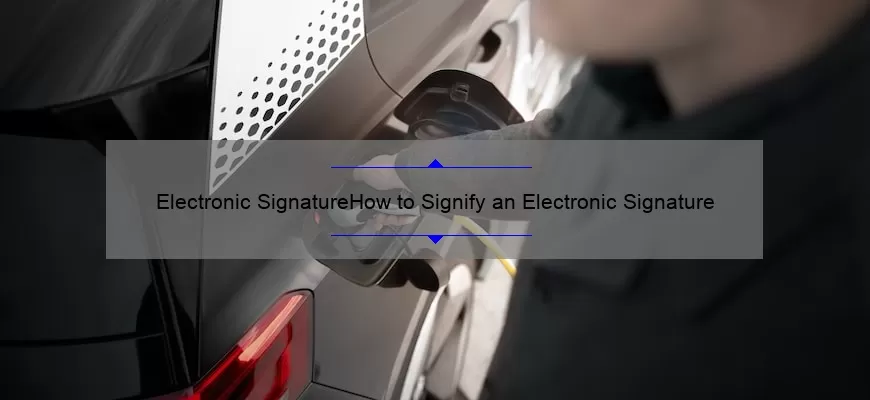What is Electronic Signature and How Does it Work?
An electronic signature, or e-signature, is a simple, secure way to sign documents and agreements online, without the need for ink or paper. It works by verifying the identity of the signer and ensuring that the document has not been changed since it was signed.
An electronic signature (e-signature) is a type of authentication used to verify a person’s identity. It allows individuals to sign documents electronically, without the need for wet ink or paper. Just like a handwritten signature, an e-signature is legally binding and can be used to sign agreements, contracts, and other documents.
E-signatures work by verifying the identity of the signer and ensuring that the document has not been altered since it was signed. This is accomplished through a secure process known as digital signature.
What are the Benefits of Signifying Electronic Signatures?
Electronic signatures (e-signatures) are a secure and convenient way to sign documents and provide a legally binding record of an agreement between two parties. They are becoming increasingly popular in today’s digital world, where business is conducted online and customers are increasingly expecting digital solutions that improve efficiency and security. There are a number of benefits that e-signatures can bring to businesses, including reduced paperwork, improved security, and faster turnaround time.
Reduced Paperwork: E-signatures reduce the amount of paperwork associated with traditional document signing. Instead of printing, signing, and scanning documents, users can simply sign a document electronically. This reduces the need for additional paper, ink, and postage, saving businesses both time and money.
Improved Security: E-signatures are much more secure than pen and paper signatures. They
What Kind of Documents Can be Signed Electronically?
Electronic signing (also known as e-signing) is becoming an increasingly popular way for businesses and individuals to formalize agreements, contracts, and other documents. E-signing is an efficient, secure, and legally binding way to get documents signed without having to physically meet and exchange paper documents.
So, what kinds of documents can be signed electronically? The answer is almost anything! Electronic signing is typically used for contracts and agreements, but it can also be used for many other documents, including:
• Tax documents, such as 1099s
• Employment agreements
• Non-disclosure agreements (NDAs)
• Lease agreements
• Loan documents
• Invoices
• Applications
• Permission slips
• Medical forms
• Insurance forms
How Can Electronic Signatures be Securely Verified?
Electronic signatures are a secure way to verify documents and transactions, and they can be used in all sorts of business and personal settings. In many cases, electronic signatures are just as secure as an ink signature, and they provide a convenient way to authenticate documents without having to physically sign them.
The security of electronic signatures depends on the type of technology used to create them and to verify them. An electronic signature should be created using a digital signature algorithm, which uses a secure key exchange protocol to generate unique digital signatures. These digital signatures will be unique to each document or transaction and are cryptographically secure.
Once the document or transaction has been signed, the signature must be verified. This is typically done using a digital certificate, which contains the secure key and the digital signature. The digital certificate is then compared to the digital






